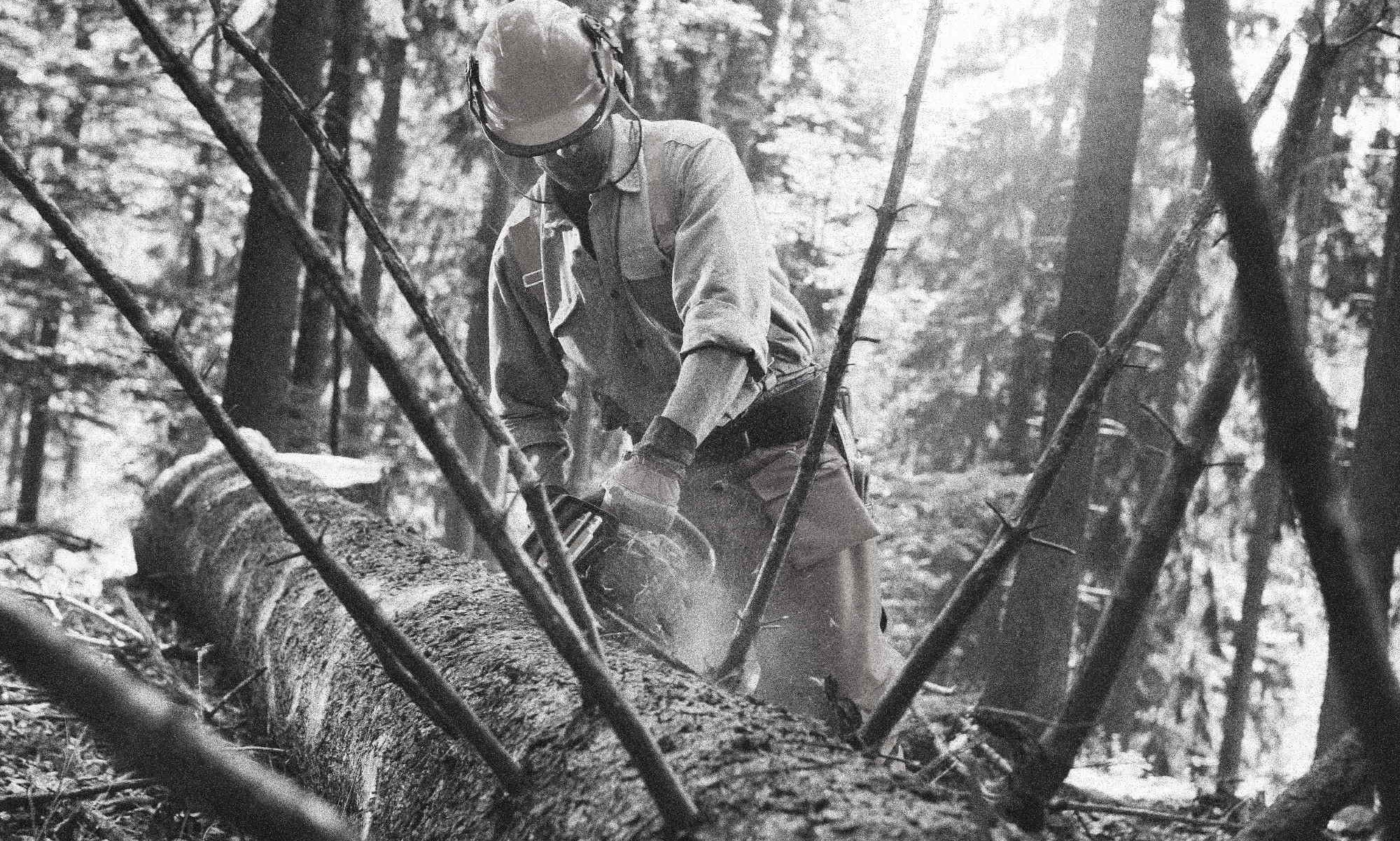Anyone who does very much sawing, anyone who starts to move beyond the very occasional backyard emergency response, is going to need a log peavey. If you have ever used one, I’m sure I just got your 100% stamp of approval with that statement. And if you’ve never used one… you are about to discover a chainsawing secret!
What is a Log Peavey
It’s a mistake to think chainsawing is all about sawing wood. It’s not that simple.
You have to saw it, yes, of course. But you have to fell it (cut the tree down). You have to remove limbs. You have to split wood, haul it, stack it, burn it, inspect it, measure it. You may have to sell it or even go get a permit to do something.
So what’s a peavey? Imagine a long lever arm you can use to multiply your strength.
They are typically made with a very thick handle, that can easily resist all the force you put into it. And that is topped off with a pivoting hook with its own sharp point that can jam into a log. And the third element is a second sharp point at the top that can be used to poke, pry, etc.
History of Log Peaveys
Maybe you didn’t come here for a history lesson, but I bet you’ll find this as fascinating as I do. The reason I say that, my post from awhile back on the history of the chainsaw is one of the more popular topics on the site!
There was a guy named Joseph Peavey. He was a blacksmith in Stillwater, Maine. He’s the guy who was credited with inventing the Peavey in 1858, hence its name.
This guy was basically a mechanical genius, and is credited with many other inventions, including
– Peavey hoist for pulling stumps and lifting dam gates
– hay press
– wooden screw vice
– special inkwell
– a new waterwheel
His son Daniel helped him make the first prototype, which they continued to tweak and modify to improve its performance.
 James Henry Peavey, who was actually Joseph’s grandson, perfected the device and its design into what so many of us use today. These were manufactured and sold through the Bangor-Edge Tool Co (see photo).
James Henry Peavey, who was actually Joseph’s grandson, perfected the device and its design into what so many of us use today. These were manufactured and sold through the Bangor-Edge Tool Co (see photo).
One side note. I frequently see stores, catalogs, and websites misspelling it “Peavy”(sic). Please help me stamp out the ignorance! The guy who invented it is Peavey, let’s make sure we get his name right.
What is a Log Peavey Used For?
Although it’s really an indispensable tool, it is most helpful in three cases:
1) Turning a heavy log or piece of wood so you can cut the other side of it.
2) Moving, dragging, or shoving something out of the way.
3) Prying a piece of wood apart.
These are not lightweight, high precision tools. They are beefy, brutal, and made for big nasty guys to do big nasty things with! And hey, I don’t mean to be a close-minded old fart – there are a lot of women out there these days making the chips fly. And the gals I know have no qualms about throwing a shoulder behind a peavey.
My Recommendations
I’ve used a lot of different log peaveys over the years, some good and some bad.
A peavey comes in different lengths. It’s probably best to consider how tall you are, how strong you are. For that matter, it’s probably best to consider your budget. But for the sake of simplicity, I’m just going to tell you what I like, and let you make your own choices.
I prefer longer peaveys, and I prefer they are made out of wood.
In general, you’ll find 58″, 59″, or 60″ tools for the long version. The shorter versions are usually 48″ or 49″. The reason I prefer the longer ones is just leverage. Remember Archimedes saying give me a long enough lever and I can move the world? Well, I don’t know about the whole world, but I have run into some big, heavy, stubborn pieces of wood.
The longer tool is typically heavier, and yes that is a drawback. Especially if you’re carrying a bunch of gear a long distance out to a work site. But I’ve found the benefit of the extra leverage and extra force is worth the drawback of the extra size/weight.
Why do I prefer wood? Well, I don’t know. I guess it’s hard to explain.
There is a certain sense of rightness, and fairness in using a tool crafted from wood to do woodworking. And also, I’ve found, even when wearing gloves, a wooden peavey is a little more forgiving and agreeable in my hands as compared to steel.
This article is getting a little long-winded, so let’s get to my suggestions.
This particular one from Lowf is what I’ve been using for years now. It is 60″ long, with a 16″ hook opening. The handle is wood, and is a beefy 2.5″ in diameter.
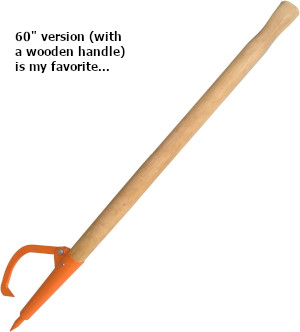
–>>>Click HERE to check “Lowf” prices on Amazon<<<<--
The only negative comment I have is about the fastener the hook pivots on. One time, my nut came off, and then of course the bolt fell out and my hook came loose. I was able to reattach it and keep working, but I wish the screw was a bit longer, and that way I could double-nut the whole thing.
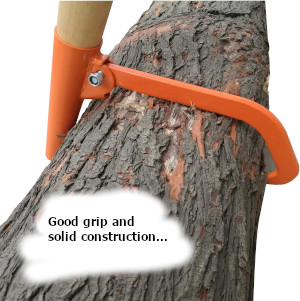
>>Check the latest prices for the 60″ peavey on Amazon – CLICK HERE <<…
If you prefer a shorter version, give this peavey a try.
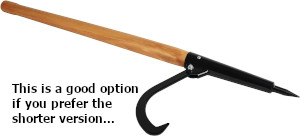
It is 49″ long, and has a high quality carbon steel head and hook on it. The hook has a 15.5″ opening. The handle is wood, and it’s 2.3″ in diameter.
I do not own this particular one, but it’s the exact one my neighbor has. I have used his many times, and it is a good solid piece of equipment that is worth its price.
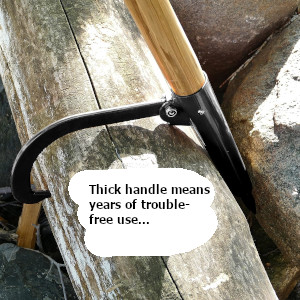
>>>Check latest prices on Amazon for the shorter peavey – CLICK HERE!…<<
So that’s it. If you have any feedback or suggestions for other good log peaveys, feel free to leave a comment or send me an email.
Jeff
